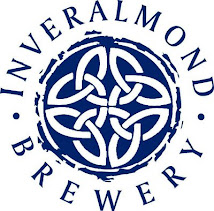 In the words of a very wise man, ''That's no moon, that's a yeast sample under the microscope''... It does look a bit moonish, but the craters aren't craters, they are yeast cells. I took this photo with my ordinary camera, just using the Macro/close up feature, and holding the lens right over one of our microscope eyepieces. To the eye, what one sees is more like the picture below, but the joys of photography gives this interesting view of Planet Yeast. Each cell is between 5 -10 micrometres across (1 micrometre is a thousandth of a millimetre), so teensy-weensy is the correct technical size.
In the words of a very wise man, ''That's no moon, that's a yeast sample under the microscope''... It does look a bit moonish, but the craters aren't craters, they are yeast cells. I took this photo with my ordinary camera, just using the Macro/close up feature, and holding the lens right over one of our microscope eyepieces. To the eye, what one sees is more like the picture below, but the joys of photography gives this interesting view of Planet Yeast. Each cell is between 5 -10 micrometres across (1 micrometre is a thousandth of a millimetre), so teensy-weensy is the correct technical size. We always have a look at our yeast before we add it to the wort in the fermenting vessel to make sure it's in good condition before it does its fermenting, eating up the wort sugars to create alcohol, CO2 and the flavour.
We always have a look at our yeast before we add it to the wort in the fermenting vessel to make sure it's in good condition before it does its fermenting, eating up the wort sugars to create alcohol, CO2 and the flavour. You can see the cells are mainly in little clumps, or flocs, because at the end of a fermentation when the young beer is nearly ready and we start to cool the tank down to 6 degrees C, the cells tend to clump together or flocculate. This is just a Latin-based word meaning to clump together like sheep in a flock. When they flocculate, the yeast cells sink down to the bottom of the FV, where we can draw off the yeast after 36 hours. We brew ale and we do use an ale yeast, but it is a bottom-cropping, top-fermenting strain. We select some of the yeast from one of the brews each week to brew with the following week, so that we are continually repitching from week to week. This week is the 523rd generation of our current yeast stock.
We are very grateful to our yeast because it does the hard work to create the complex fermentation flavours in our beers and we would have any beer without it!
Thank you, our wee yeastie beasties!
Slainte, Ken
 Had a few brewing friends staying over from Czech Republic at the end of October and to celebrate Czech National Day on 28 October we had a wee tasting, or organoleptic evaluation as we brewers like to call it, in the brewery bar and tasting suite. Above left is Ales Dvorak, technical brewer at Budvar Budweiser, pulling a pint of Ossian for Oudak, former Chief Test Pilot for Czech Air Force. It was also my birthday, so we tasted everything from Santa's Swallie to Pundie...
Had a few brewing friends staying over from Czech Republic at the end of October and to celebrate Czech National Day on 28 October we had a wee tasting, or organoleptic evaluation as we brewers like to call it, in the brewery bar and tasting suite. Above left is Ales Dvorak, technical brewer at Budvar Budweiser, pulling a pint of Ossian for Oudak, former Chief Test Pilot for Czech Air Force. It was also my birthday, so we tasted everything from Santa's Swallie to Pundie...

 Slàinte and Na Zdràvi! Ken
Slàinte and Na Zdràvi! Ken 


